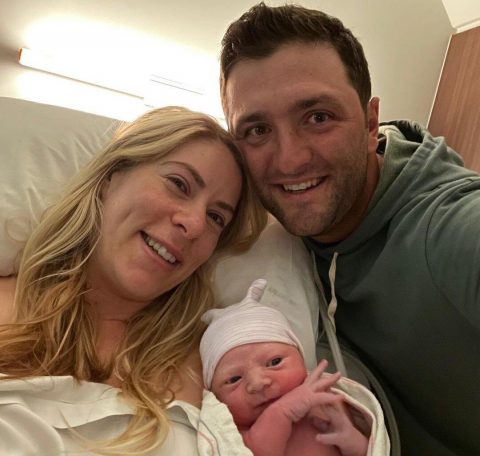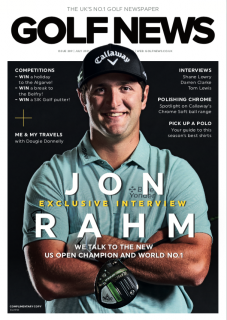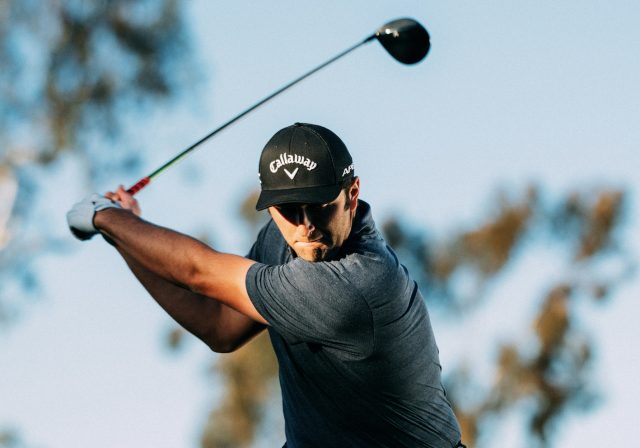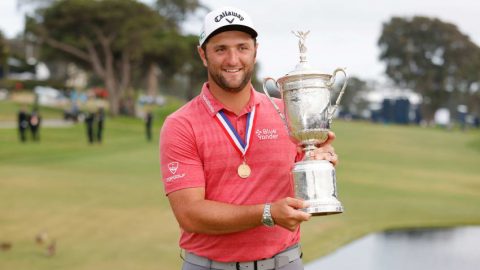Rising to the rank of world No.1 last summer was a fully deserved reward for the ultra-consistent Jon Rahm, but the 26-year-old Spaniard always knew that winning Majors is what really counts when it comes to measuring greatness in golf. And now he has one, courtesy of a stunning victory at the US Open at Torrey Pines. Here he explains what it means to him, his family and a golfing nation looking for someone to follow in the footsteps of the late, great Seve
You had been heralded as the best of the current crop of young players not to have won a major for several years now, so how does it sound to be able to call yourself a Major champion?
It sounds good, but it will take a little time to sink in. It’s incredible that I’m sitting next to the US Open trophy. A couple of weeks ago, I watched my good friend Phil Mickelson win the PGA Championship, and I took a lot of inspiration from that. I’ve been close before, and I just knew that the way I have been playing the last few majors, I had to be close. I knew I could get it done.
At what point during the final round at Torrey Pines did you think you could actually win it?
After I missed my birdie putt on 14, I told my caddie, Adam, that two fours and two threes on the last four holes wins the tournament, and that’s what I set out to do – play four really good holes. Not that I was really thinking about it on 17, but the last time I won at Torrey Pines I finished birdie-eagle, and I knew I could finish strong again. I knew history could get close to repeating itself. I stayed patient all day. I hadn’t made many long putts all week, but I’d made a couple of long left-to-righters in the past in some clutch moments in my career, and I was able to get two more on the last two holes.
Do you feel like it was meant to be – winning your first Major on a course that you’d won your first PGA Tour event, and doing it on Father’s Day?
Yes. Anyone who knows me know how much I love Torrey Pines. San Diego been my favourite US city for a long time. It was my wife’s favourite city before we ever met.
 Getting my first PGA Tour win here the way I did and with my dad watching was a very special moment. But to get this one done, as a father on my first Father’s Day, with my dad here, and all of my family here, makes it even more special. It’s very hard to believe, that this story can finish up the way it did. It almost feels like it’s a dream sequence in a film that’s about to end and I’m going to wake up soon. I love Torrey Pines, and it seems like Torrey Pines loves me. It reminds me a lot of back home where I grew up in Spain. It’s not exactly the same, but the coastline, the weather – this is basically a good summer day where I grew up – and these poa annua greens are something I know and I understand and I grew up on, and I think it’s something that really resonates with me. I’m really confident on it.
Getting my first PGA Tour win here the way I did and with my dad watching was a very special moment. But to get this one done, as a father on my first Father’s Day, with my dad here, and all of my family here, makes it even more special. It’s very hard to believe, that this story can finish up the way it did. It almost feels like it’s a dream sequence in a film that’s about to end and I’m going to wake up soon. I love Torrey Pines, and it seems like Torrey Pines loves me. It reminds me a lot of back home where I grew up in Spain. It’s not exactly the same, but the coastline, the weather – this is basically a good summer day where I grew up – and these poa annua greens are something I know and I understand and I grew up on, and I think it’s something that really resonates with me. I’m really confident on it.
How did you manage to stay so calm while all the others around you seemed to be losing their heads? Were you aware of what was going on at the top of the leaderboard?
I might have looked calm, but I was not calm. I wish people could see our heart rate when we’re playing in those moments because that was tense. But you practice to let your body basically take over, right? That’s what I did. My mindset was the same on the first putt on Thursday to the last one on 18. Situation does change a little bit, but routine and really staying in the present is what helps.
I was trying not to look at the leaderboards, but the crowd was not cooperating. They were telling me exactly what was going on. So, I decided to embrace it. As it was starting the back nine, I saw all those great names up there, and I thought myself whoever wins this one is going to be the one who won a US Open with a star-studded leaderboard. After that, I just went about my business. I knew I had to survive holes 10 to 13, and hopefully give myself a chance on the final five, which I did.
It took Mickelson until he was 34 to win his first major, but you’ve done it at 26, which is still young. Did you feel like a weight of pressure building up as each major came and went?
 No. It’s very easy to get into a mindset of think that only majors count, and that nothing else matters. I mean, we all know that winning a major is not easy, and that’s why only a select group of people have done it. I arrived at the US Open hoping to play well, but a little bit of me was relaxed about it all. You know, I could use my Covid result and my lack of practice as an excuse for not playing well.
No. It’s very easy to get into a mindset of think that only majors count, and that nothing else matters. I mean, we all know that winning a major is not easy, and that’s why only a select group of people have done it. I arrived at the US Open hoping to play well, but a little bit of me was relaxed about it all. You know, I could use my Covid result and my lack of practice as an excuse for not playing well.
Ever since the Sunday at the PGA, I’ve felt a bit of a shift on the golf course mentally. I still had that grit, but almost like each miss bothered me less. I couldn’t tell you why. I believe it’s because I really set out myself to be an example for my son that he would be proud of, and I’ve done some stuff in the past on the golf course that I’m not proud of, and I wish I could eliminate it.
But I’ve accepted it. I’m not saying it’s going to be smooth sailing until the end, but I feel like that Sunday of the PGA changed things a little bit. My mental game was really good, and it was the same thing at Memorial. Mentally, I was in a really good place and that’s what allowed me to play such good golf.
In the past I’ve got frustrated in the US Open. I’ve made a lot of birdies and a ton of bogeys and double bogeys, and I was able to kind of switch it up this week and actually made more birdies than bogeys and get it done.
Do you think that missing out on the win at the Memorial kind of spurred you on to winning the US Open?
It’s hard to say, but I did manage to gain some strength from it, especially from the amount of support I had from friends and other golfers. The first person who called me after I knew I had to withdraw was Padraig Harrington. He told me a story in which he was leading by five after 54 holes, signed the wrong scorecard, and got disqualified. He said he learned a lot more from that situation than he would ever learn from the win. Nick Faldo texted me the next morning and told me a story of how he was leading a tournament by six with six holes to go and got disqualified, and how he learned from that and got a win the week after.
I believe from the biggest setbacks we can get some of the biggest breakthroughs, and that’s why I stayed so positive. That’s why I kept telling myself and everyone around me that something good is going to come out of it. I don’t know what, but something good is going to come, and I felt it today out there on the golf course. I had Padraig and Nick in my mind when I was out there on the golf course a couple times, knowing that they won shortly after, and I knew that it was going to be my day. It felt like such a fairy tale story that I knew it was going to have a happy ending.

Now that you’ve got a Major in the bag, can you describe what the process has been like of getting your temperament to match your talent?
It’s been a steady process. Like is full of setbacks, but I feel like from those setbacks, some good moments have come. I believe becoming a dad was always going to help me because before, I could always have the excuse that getting mad helped me out, helped me win golf tournaments, but right now I’m a role model to my son. I’m going to be, as I am to many kids out there.
Now I understand what I can do, and I know I can perform at my best without showing my frustration so much. I made that deal with myself after the third round of the PGA. I wasn’t happy with how I ended, and I could have handled it better, and I vowed to myself to be a better role model for my son. He won’t remember any of this, because he’s only ten weeks old, but I will. Hopefully in the future, he can grow up to be someone who’s proud of his dad. I hope I can provide that example.
The win takes you back to being world No.1. Which is more important, being no.1 or having that Major?
Well, I’ve got both now, so it’s all good! Becoming world No.1 is a consequence of playing really good golf for a very long time, while winning a major championship is performing really well for just one week. The odds of someone just coming in and just having a better week than you are very short, but to do that over a much longer period of time is a lot harder, so I was very proud of getting to No.1 so early in my career, with or without a major. Of course, I want to win more tournaments, and hopefully win some more Majors, but I also want to be the best and most consistently high performing golfer I can be. Everything else is pretty much out of my control.
I do feel like there’s some magic formula that some people have to deal with the added pressure and stress of a major, and it has taken me some time to figure out what that was. Some people, like Jordan Spieth, found it really early in their careers, while some have taken longer. But it’s something you’ve got to figure out. Each time I’ve played in a major I’ve felt more comfortable and gave myself better chances, and we eventually got to a point where all the stars aligned and I was able to get the job done.
Although there were only 12,000 fans out there, how important was it to have fans back and how have you found playing without them during the pandemic?
After having played tournaments with nobody watching for so long now, having tournaments with 5,000 or 10,000 fans back, felt like a huge change. It was certainly great to have them back at the US Open. The fans are a little bit more vocal and want to make themselves heard, so it’s been nice to see that the enthusiasm for live sport, and live golf, is still there.
Fans are a central part of the game and they create the atmosphere, and I’m glad they’re out there, because as players we’ve missed them. But at the same time, I also want everybody to be safe.
At the end of the day, we play for ourselves, but we’re also here to entertain as well, so we’re playing for them. From a playing perspective, the one thing a lot of us have talked about is how much smaller the greens look when they’re not surrounded by grandstands. The overall look of many of the courses we play is totally different and it can play tricks with your head sometimes.
It’s been well documented that Rory [McIlroy] lost his way a bit last year trying to get on a more of a level playing field with Bryson DeChambeau. Have you found yourself chasing clubhead speed or distance at all?
Not in a way where I’m going to go out of my way trying to gain a lot of muscle or change my body composition. I’m already a good ball striker and I’m usually up there in the rankings when it comes to strokes gained off the tee and tee to green, so it’s never really been an issue for me.
I feel I could crank out a few more yards by just swinging a little harder, but I’m pretty comfortable with where I am and feel like I hit it far enough already. Extra distance is never a bad thing, but I’m not looking to bulk up or make any significant adjustments to my tempo or my swing.

You switched clubs at the end of last season and joined Callaway, playing its clubs through the bag. How important has the switch been in your results this season and how long did it take you to get comfortable with all the new equipment?
The new ball and the new irons have allowed me to hit certain shots that I simply wasn’t capable of before and it showed. I need to say a huge thank you to the team at Callaway for that.
As soon as the Masters finished in November last year I went straight to San Diego and spent three days at Callaway’s test facility hitting a lot of shots and getting dialled in with the new gear. By the time I went home I was really confident with everything.
The switch to the new clubs was pretty straightforward, but the biggest thing to get used to is the golf ball. It’s one thing hitting shots at home or on the range, but it’s another thing hitting shots in competition, especially seeing how the ball reacts in different wind conditions, different temperatures and air densities.
Practicing where I live in Arizona, you’re at a high altitude, so the ball tends to go pretty straight, as there’s not much wind. So, I had to get use to the different situations, like they were at Torrey Pines, where the wind was a bit stronger and the air a little thicker, where the ball moved a little bit more. Again, it’s been working pretty well. My ball-striking has been good all year, and hopefully it just keeps feeling good.
It’s been well documented that Rory McIlroy lost his way a bit last year trying to get on a more of a level playing field with Bryson DeChambeau. Have you found yourself chasing clubhead speed or distance at all?
Not in a way where I’m going to go out of my way trying to gain a lot of muscle or change my body composition. I’m already a good ball striker and I’m usually up there in the rankings when it comes to strokes gained off the tee and tee to green, so it’s never really been an issue for me. I feel I could crank out a few more yards by just swinging a little harder, but I’m pretty comfortable with where I am and feel like I hit it far enough already. Extra distance is never a bad thing, but I’m not looking to bulk up or make any significant adjustments to my tempo or my swing.
WHAT’S IN JON RAHM’S BAG?
Driver Callaway Epic Speed Triple Diamond (10.5°)
Fairways Callaway Epic Speed Sub Zero (14°, 18°)
Utility Callaway X Forged UT (22°)
Irons Callaway Apex TCB (4-PW)
Wedges Callaway Jaws Forged (52°, 56°, 60°)
Putter Odyssey White Hot OG Rossie S
Ball Callaway Chrome Soft X
Leave a comment